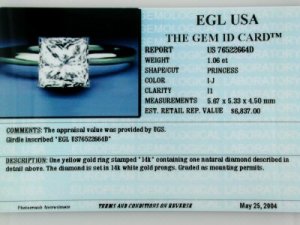pricescope
Ideal_Rock
- Joined
- Dec 31, 1999
- Messages
- 8,266
Hi guys, we finally published the results of Grading Lab Survey, which was solely funded by Pricescope.
That was quite a bit of work
 Garry Holloway and I decided to run this survey while skiing together in Whistler last March. It seemed so easy back then when we discussed in while sitting in the lift-chairs.
Garry Holloway and I decided to run this survey while skiing together in Whistler last March. It seemed so easy back then when we discussed in while sitting in the lift-chairs.

First of all, it must be absolutely independent and funded only by Pricescope. Secondly, surveyed labs must not be aware about the survey.
The plan was to ask three separate vendors to select several diamonds from their inventories, which already had grading reports, and send them to other labs. For this first exercise we decided to limit the number of labs to GIA, EGL USA and AGS because their reports are most often for the internet diamonds, which allows doing a price analysis as well.
After getting all the certificates from the labs, the stones were shipped to David Atlas, AGA, for additional checking in his lab. Then it comes to the data analysis and most difficult part – writing an article
 .
.
Finally, we sent the draft to all three surveyed labs for the data verification. It was a good move because it helped us to reveal some errors in the data and most importantly that two original reports were from different stones (mix-up happens)! We had to re-examine our results and some of the conclusions.
I hope that the article is errors’ free now but if you’ll find something slipped through, please let us know.
We wish to acknowledge the help and assistance provided by Mark Turnowski, EngagementRingsDirect, Jim Schultz, DirtCheapDiamonds, and Brian Gavin, Whiteflash, who provided diamonds for this survey, making them unavailable for sale for a considerable period, and for the administrative work involved in shipping and collating information.
We are also grateful to Mr. P. Yantzer, the Director of AGSL, Mr. B. Boyajian, the President of GIA, and Mr. M. Gershburg, the Director of EGL USA, for their help in verifying the data presented in this article and constructive criticism.
Many thanks to all the friends who went thru the drafts and shared their opinions.
That was quite a bit of work


First of all, it must be absolutely independent and funded only by Pricescope. Secondly, surveyed labs must not be aware about the survey.
The plan was to ask three separate vendors to select several diamonds from their inventories, which already had grading reports, and send them to other labs. For this first exercise we decided to limit the number of labs to GIA, EGL USA and AGS because their reports are most often for the internet diamonds, which allows doing a price analysis as well.
After getting all the certificates from the labs, the stones were shipped to David Atlas, AGA, for additional checking in his lab. Then it comes to the data analysis and most difficult part – writing an article

Finally, we sent the draft to all three surveyed labs for the data verification. It was a good move because it helped us to reveal some errors in the data and most importantly that two original reports were from different stones (mix-up happens)! We had to re-examine our results and some of the conclusions.
I hope that the article is errors’ free now but if you’ll find something slipped through, please let us know.
We wish to acknowledge the help and assistance provided by Mark Turnowski, EngagementRingsDirect, Jim Schultz, DirtCheapDiamonds, and Brian Gavin, Whiteflash, who provided diamonds for this survey, making them unavailable for sale for a considerable period, and for the administrative work involved in shipping and collating information.
We are also grateful to Mr. P. Yantzer, the Director of AGSL, Mr. B. Boyajian, the President of GIA, and Mr. M. Gershburg, the Director of EGL USA, for their help in verifying the data presented in this article and constructive criticism.
Many thanks to all the friends who went thru the drafts and shared their opinions.











300x240.png)